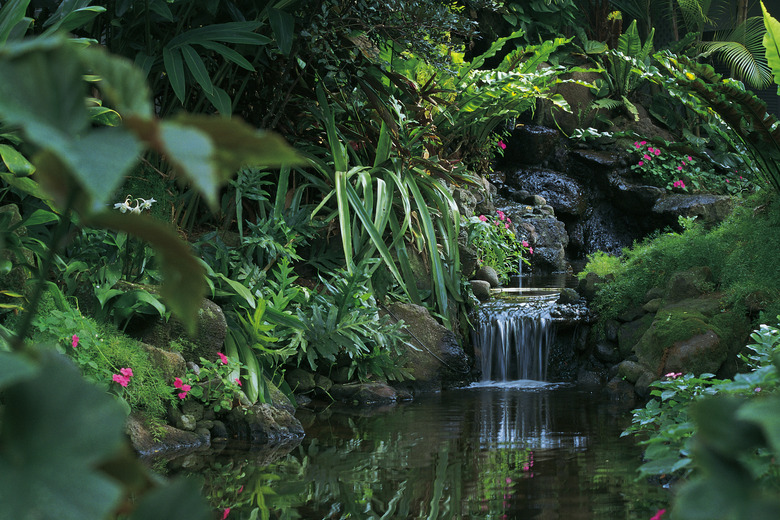Lacy-Tree Philodendron Care
Also commonly called split leaf philodendron or tree philodendron, Lacy-tree (Philodendron bipinnatifidum) is a large tropical shrub commonly grown as a house plant or tropical landscape plant that can reach heights of up to 15 feet, with a similar spread. The plant produces deeply cut leaves that are up to 3 feet long with ruffled edges. Plants grown outdoors may produce a foot-long, purplish inflorescence.
Hardiness
A native of the tropical rainforests of southern Brazil, Argentina, Paraguay and Bolivia, Lacy-tree thrives in warm conditions. The plant may be grown outdoors in USDA zones 9 to 11. Lacy-tree can handle temperatures as low as 30 degrees. Winter frosts may kill the plant to the ground, although established plants often return in the spring. Indoor plants do best with a temperature that consistently stays above 55 degrees Fahrenheit in the winter and 70 degrees Fahrenheit in the summer.
- Also commonly called split leaf philodendron or tree philodendron, Lacy-tree (Philodendron bipinnatifidum) is a large tropical shrub commonly grown as a house plant or tropical landscape plant that can reach heights of up to 15 feet, with a similar spread.
- Winter frosts may kill the plant to the ground, although established plants often return in the spring.
Location
Like other philodendrons, Lacy-tree dislikes full sunlight. The plant prefers dappled or partial shade. Indoor plants do best in bright, indirect sunlight, such as sunlight diluted from a curtain. Variegated varieties are more tolerant of sunlight. Place indoor plants near an electric air humidifier during the winter if possible to increase humidity. Misting can also increase humidity. When planting Lacy-tree outdoors, ensure that there will be plenty of room lest the tree outgrow its location.
- Like other philodendrons, Lacy-tree dislikes full sunlight.
- Indoor plants do best in bright, indirect sunlight, such as sunlight diluted from a curtain.
Culture
Lacy-tree prefers organic soil that has a slightly acidic pH. The plant is sensitive to salt and therefore not appropriate for salty coastal gardens. The plant is tolerant of some soil alkalinity, although it may develop unsightly yellow leaves. The plant is not tolerant of drought and must be watered regularly. Soil should be moderately moist throughout the growing season. Reduce watering in the winter, keeping the soil just barely moist to the touch.
Considerations
Lacy-tree may be propagated with little effort: Simply remove shoots from the base of the plant's thick stem and place in a well draining, moist potting mixture. The plant may also be cultivated from seed. Several cultivars are available commercially, including the yellow leafed Gold Satin and the variegated Lime Fiddle. Those looking for a smaller house plant or garden plant can try a dwarf variety. Dwarf varieties include the thick-leafed Little Crunchy and the shade-loving Xanadu.
- Lacy-tree prefers organic soil that has a slightly acidic pH.
- The plant is sensitive to salt and therefore not appropriate for salty coastal gardens.
- Lacy-tree may be propagated with little effort: Simply remove shoots from the base of the plant's thick stem and place in a well draining, moist potting mixture.
